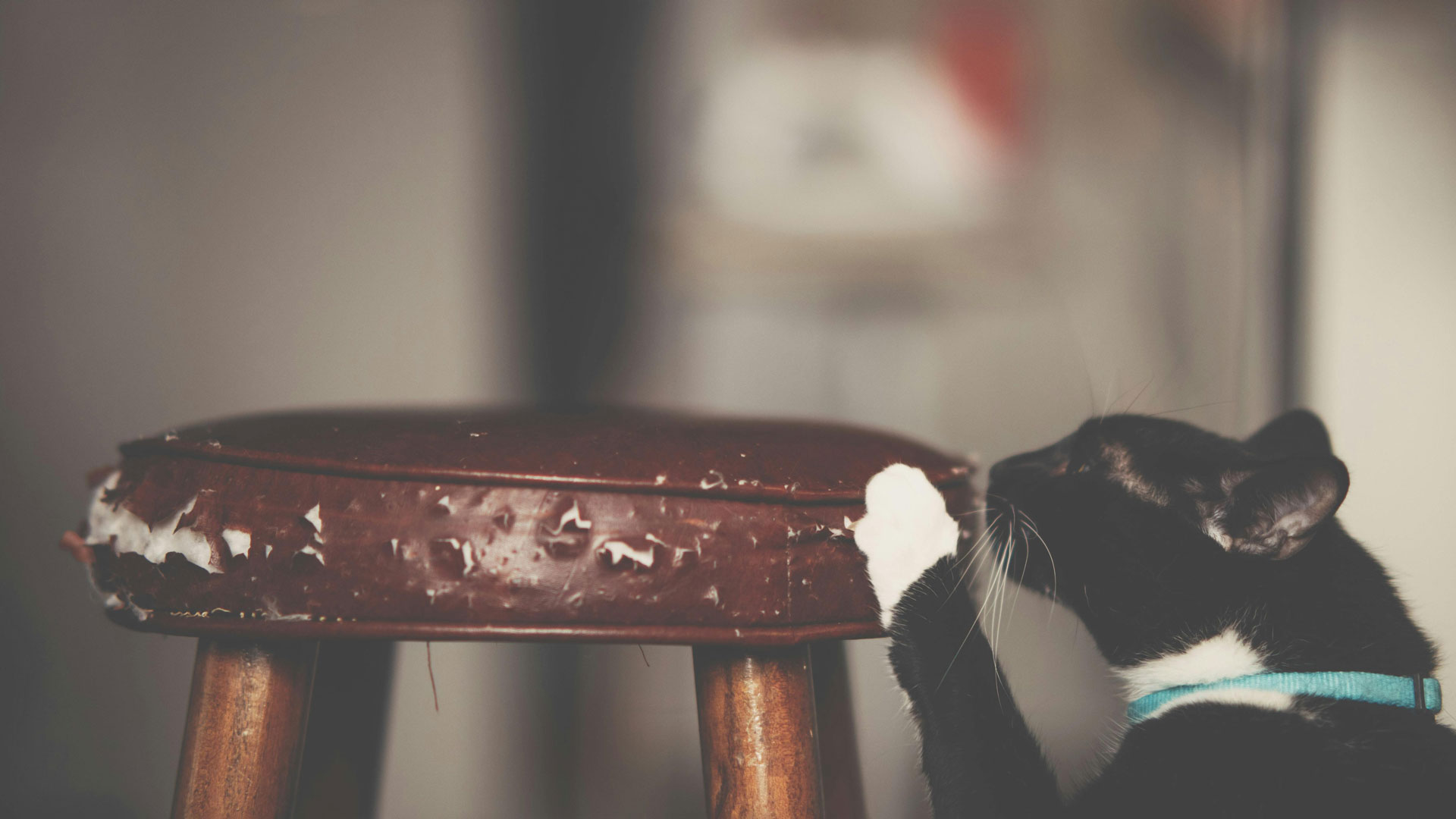Scratching is a natural and instinctive behavior in all kinds of cats. This behavior can be quite frustrating, as your leather furniture can become a target.
How do you stop a cat from scratching leather furniture? This is a key, oft-repeated question that all cat owners ask at some point or another. Luckily, you’ve come to the right place in your search for answers. Read on!
Tip 1: Get a Cool Scratcher for Your Cat
It is important to provide alternative scratching posts for your cat. There are some things you need to consider when getting a new scratching option for your cat.
Understanding Your Cat’s Preferences
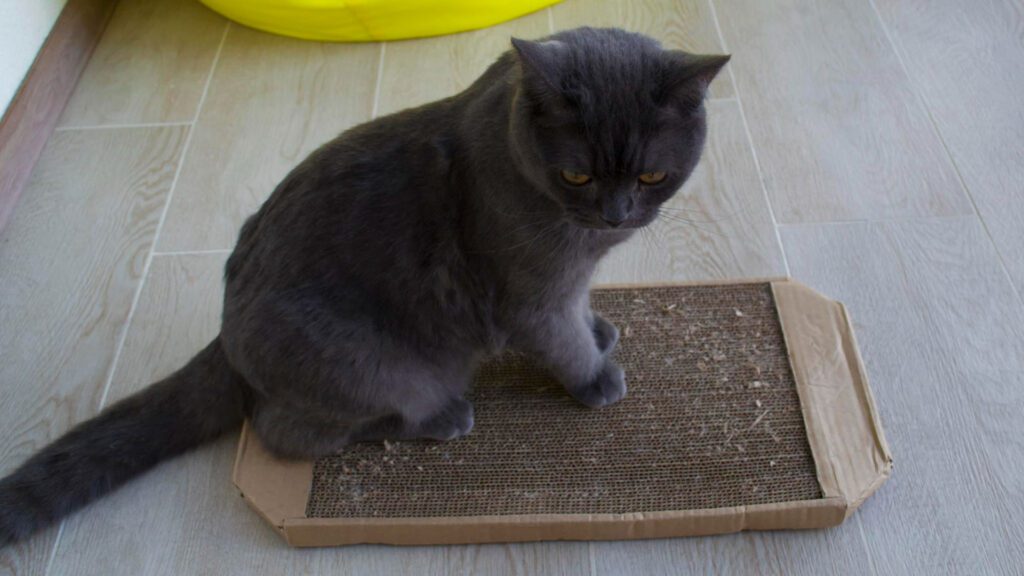
Cats can have a favorite texture or material they enjoy scratching. Cardboard scratchers are great because they’re affordable and have a satisfying texture for many cats.
On the other hand, sisal rope scratchers offer a more durable option and can stand up to lots of clawing. Observe your cat’s current scratching habits to get clues about what they might prefer.
Train Your Cat to Use the Scratcher
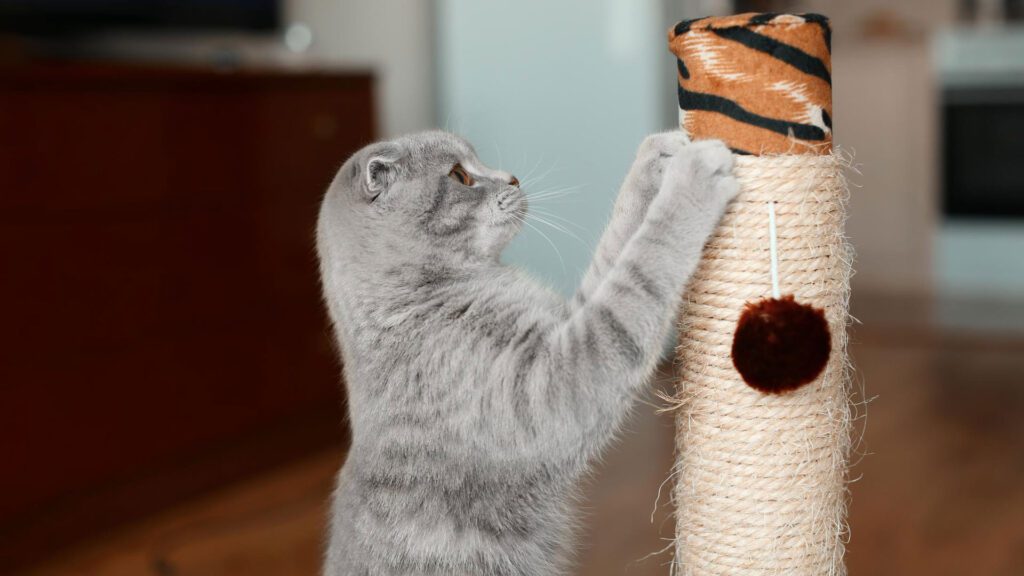
It’s important to show your cat how to use the scratcher. Cats learn a lot by watching, so get down on the floor and scratch the new toy yourself. This might seem silly, but it’s a good way to grab your cat’s attention. Once you’ve shown them how it’s done, they’re more likely to give it a try.
Introducing Catnip
If your cat seems hesitant, use catnip. A sprinkle of this magical herb can make any toy irresistible to your feline. Catnip is completely safe and can encourage your cat to use the new scratching post. Just a little bit on the new scratcher can make a big difference.
Tip 2: Where to Put the Scratcher
Choosing the perfect spot for your cat’s scratcher can make all the difference.
Common Areas: Cats are social creatures. They often prefer to be where their human family spends a lot of time. By placing the scratcher in these common areas, like the living room or family room, your cat may be more inclined to use it.
Close To Scratch Zones: Position the scratching post near your cat’s favorite scratching spots. For example, if your feline friend has taken a liking to a particular corner of the sofa or a section of the carpet, putting the scratcher close to these areas can redirect their attention.
Consistency: Once you’ve found a spot where your cat likes to scratch, keep the scratcher there. Moving it around can confuse them, and they might just go back to using your furniture.
Tip 3: Make Your Leather Furniture Less Appealing
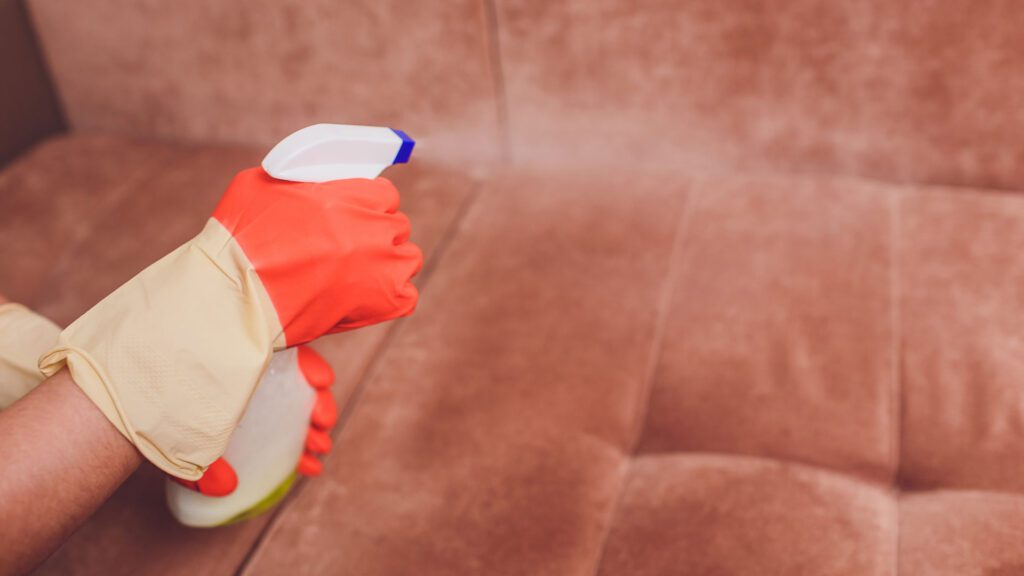
You can protect your leather furniture by deterring your cat from clawing at it. Here’s how:
Physical Deterrents: Apply double-sided tape or tinfoil on the areas your cat usually scratches. Cats dislike the sticky feeling on their paws, and this can deter them from scratching your furniture.
Furniture Covers: Covering your furniture might stop your cat from scratching at it. It also keeps the damaged leather hidden from visitors.
Cat Repellent Spray: Another effective strategy is using a citrus-scented spray, which cats do not like. Spray a bit on their favorite scratching spots, and it might just do the trick. However, it’s important to test the spray on a small, hidden area first to make sure it doesn’t stain the fabric or leather.
By making your leather couch a less enticing option, your cat is more likely to leave it alone and stick to their actual scratcher. It’s all about positive redirection.
Tip 4: Get Your Cat’s Claws Trimmed
Just as we clip our nails to keep them tidy, cats need their claws trimmed to stay healthy and to protect your home items, like leather sofas.
Shorter nails are less likely to cause damage because they aren’t as sharp. This doesn’t mean your cat won’t still enjoy a good stretch or paw at their favorite spot, but it does reduce the risk of those dreaded scratch marks on your precious furniture.
Soft Nail Caps:
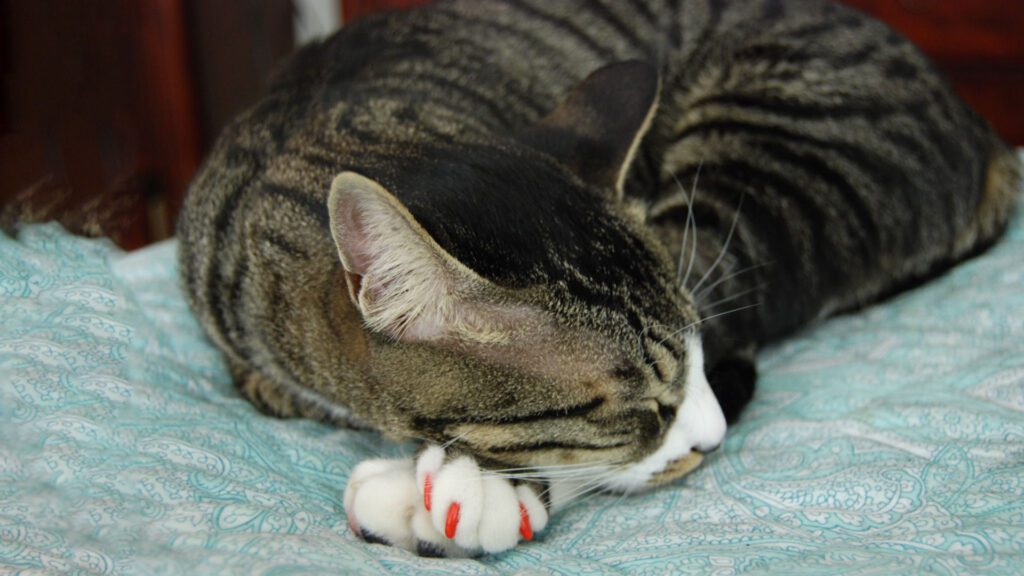
Soft nail caps cover the claws and act as a barrier between your cat’s nails and your leather furniture, without harming your cat. These caps are usually made of a safe, soft plastic material and can be found in pet stores or online.
They come in different sizes and colors, so you can even add a bit of style to your cat’s look! To apply them, you’ll need to trim your cat’s nails first, then simply glue the caps on. Most cats get used to them pretty quickly, and they typically last around 4-6 weeks.
Tip 5: Lots of Fun for Your Cat
Have you noticed your cat scratching and clawing leather furniture more than usual? This might be a sign they’re feeling bored or have energy to burn. You can redirect your cat’s natural instincts

Cat Tree: A great way to start is by introducing a cat tree. These multi-level playhouses are perfect for climbing, scratching, and napping. They give your furry friend a space of their own.
Toys: Another way to engage your cat is through a variety of toys. Interactive toys like laser pointers, feather wands, and battery-operated mice provide both physical and mental exercise. Puzzle feeders can also stimulate their brains by making them work for treats.
Window Perch: Cats love to observe the world from a safe spot. A comfy perch by the window offers a view of the outdoors, where they can watch birds and squirrels, which is like live entertainment for them.
Daily Playtime: A regular playtime routine with your cat is essential. It strengthens the bond between you two and keeps your cat’s mind sharp. Just a few minutes of playing fetch or chase with a ball can make a big difference in their happiness and behavior.
Tip 6: Ask for Help

If your cat is still engaging in destructive scratching, it is best to consult a cat behavior expert. They can help to figure out the whys behind your cat’s love for scratching up the wrong places.
They will take a close look at your cat’s daily life. They’ll want to know everything—from what your cat eats to where it sleeps and how it spends its day. This helps them understand your pet’s needs and quirks.
These behaviorists can provide expert tips and help you develop strategies to train your cat, such as positive reinforcement. Ultimately, this will keep your cat away from your leather furniture.
What Not to Do
While trying to stop cats from scratching furniture, there are a couple of things cat owners must avoid.
Avoid Declawing
Declawing is a surgical procedure that removes part of a cat’s toes. It’s extremely painful and can cause long-term physical and behavioral issues. After being declawed, cats might become sad or display signs of aggression because they’re in pain.
They rely on their claws for various activities, including stretching, balancing, and defense, so without them, they may feel vulnerable and stressed.
No Punishment:

Cats are sensitive creatures, and raising your voice or punishing them does more harm than good. Yelling can be terrifying for a cat, and they don’t understand punishment as we do.
Instead of learning what they did wrong, they might just start to fear you. Cats respond much better to positive reinforcement.
The Verdict: Stopping Cats From Scratching Leather Furniture
Scratching furniture is a natural behavior for cats. It helps them stretch, mark their territory, keep their claws sharp, and even feel less stressed. Training cats to stop scratching behaviors can take a long time, but it works. Eventually, your furniture will be safe.
When you’re trying to keep your leather piece safe from their claws, you can deter them and provide them with an alternate solution. Play with your cat to redirect its energy and attention towards other things.

